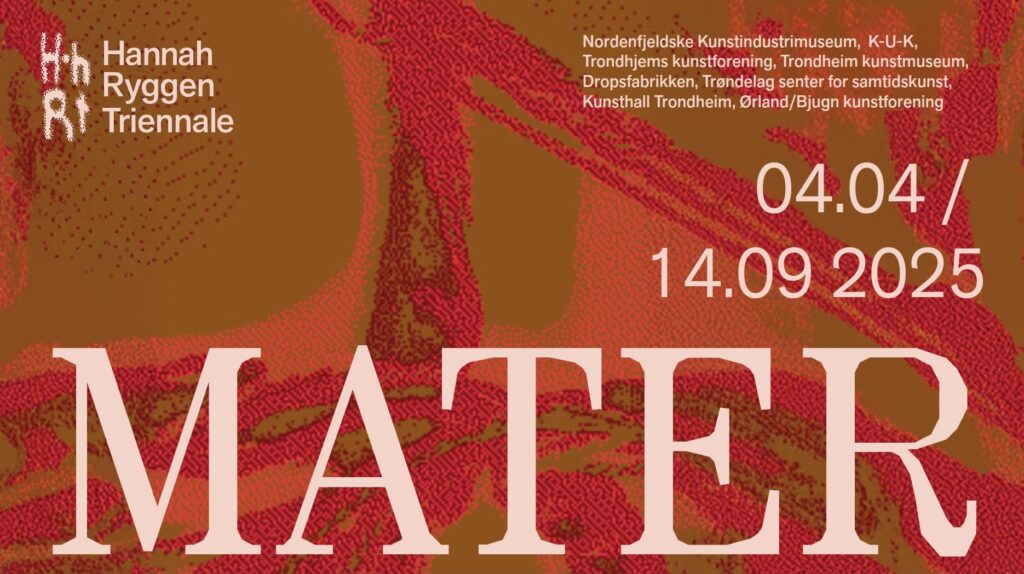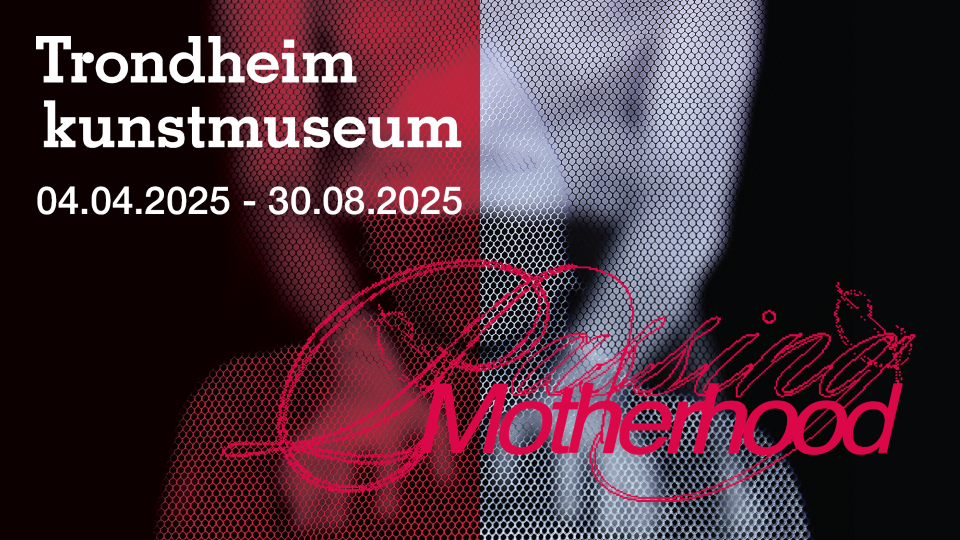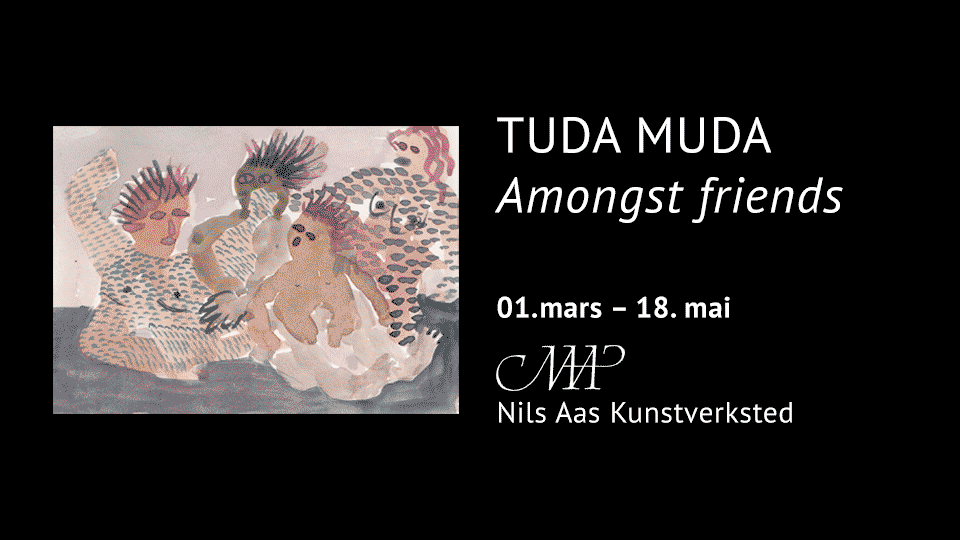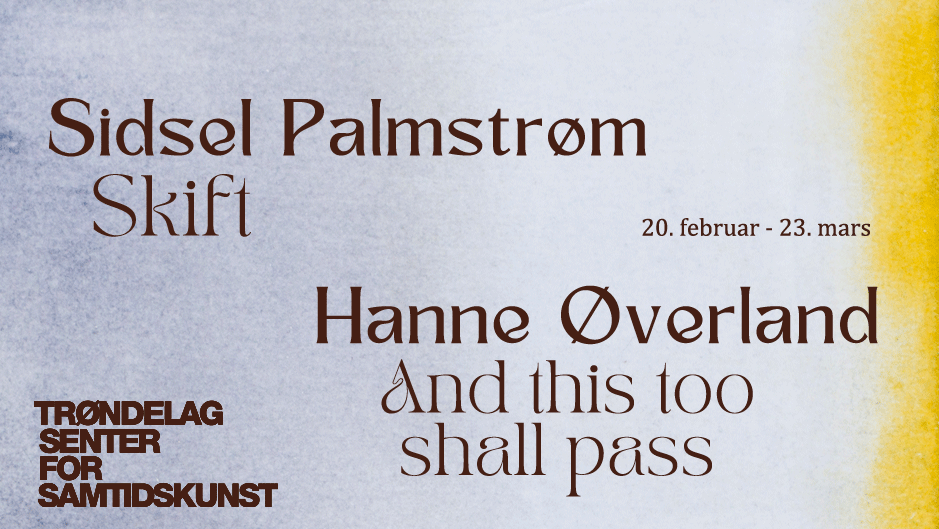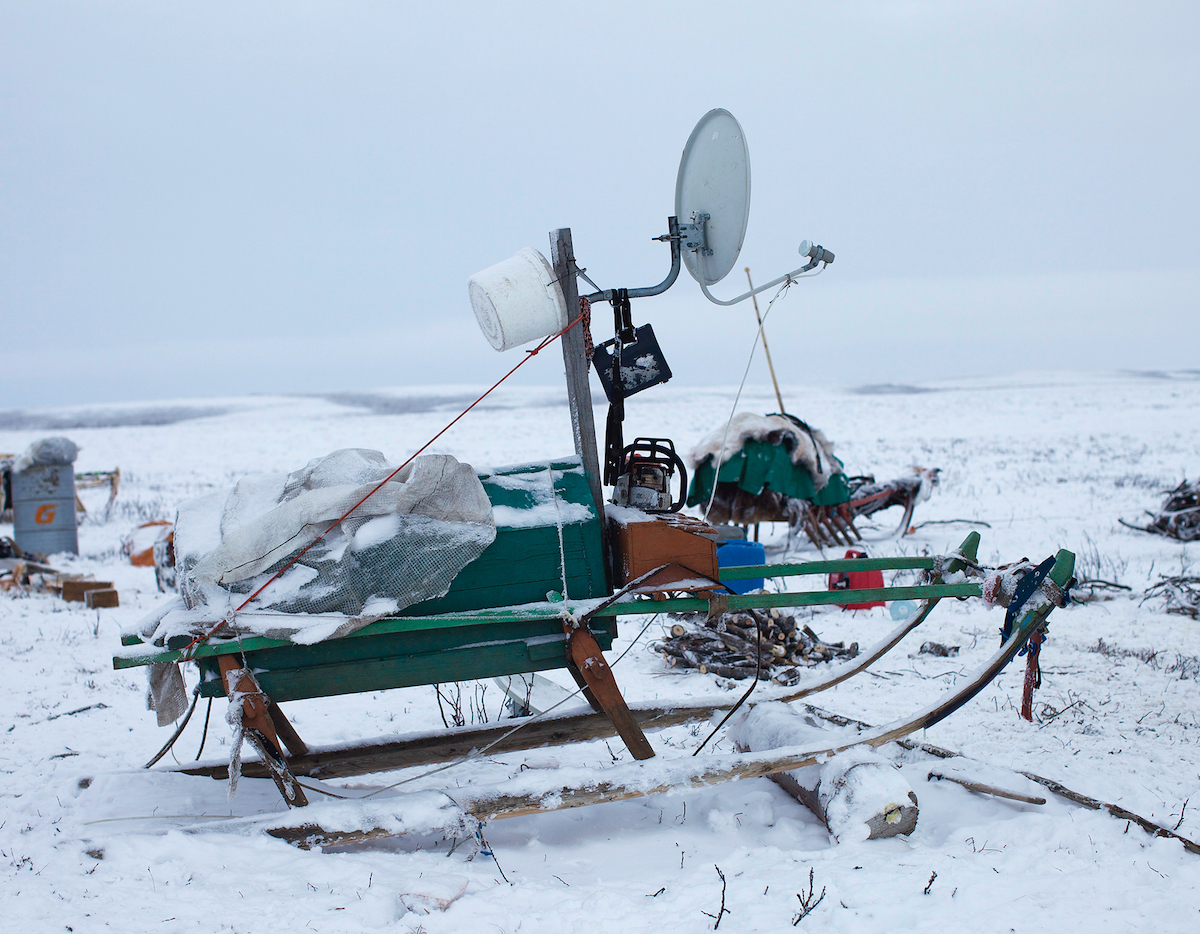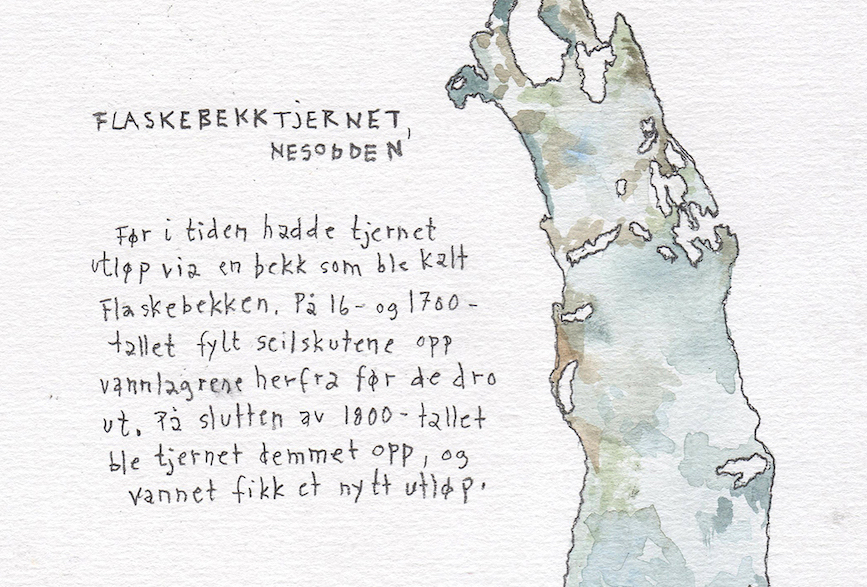Balancing Act

Interviews, Märit Aronsson-Towler 21.01.2022
Martine Linge and Ellen Grieg both work with nature as their point of departure, but with very different results. Martine’s works are generally found hanging on the wall or lying on the floor, collectively amounting to a language of sculptural signs made from a variety of materials, while Ellen’s works usually hang from the ceiling – large organic forms of white synthetic rope with elements of vibrant colour. One has a sense of being inside the concept nature – under water among colourful jellyfish yet at the same time on a footpath in the forest.
The artists were brought together by Margrete Abelsen, producer of exhibitions at Trøndelag Centre for Contemporary Art, and on Friday their exhibition opens under the dual titles of Bevegelser i ulendt terreng (Movements on Rough Terrain) and Kveil (Coil). As the exhibition is being mounted, I arrive a few hours after Ellen. As Margrete tells me: “There’s an affinity between Martine and Ellen that becomes more apparent when they exhibit together. Both take the materials they work with as a challenge. The contrast between their idioms highlights a strength they both share: a commitment to explore something over time.”
We have arranged a video meeting with Martine, who is in Oslo. It’s the first time she and Ellen have seen each other in several years.
Ellen Grieg: I remember the first time I met Martine. It was during a Land Art project in Ny Hellesund in the late 1990s. Each day she sat on a rock down by the sea polishing one small patch. Her right hand went round and round until eventually the patch became shiny. She stuck at it for several weeks. It was beautiful! Since then we’ve only met by chance. For this exhibition, Martine and I have had no communication whatsoever. We have only spoken to Margrete about the selection of works. The invitation to exhibit came at short notice, giving us little time to prepare. The show includes three of my own works, one of which is brand new.

Märit Aronsson: According to the exhibition text, one of the things you have in common is that you both resituate your materials. Could you say more about this?
Martine Linge: What this means is that we resituate a material away from its original use. This is what Ellen does with rope, for example. I tend to think of my own work as translating an expression from one material into another. By means of a casting process, for instance, whereby I translate a sculpture made in soft clay into hard bronze. It’s just like translating a language; you lose something in the process, but gain something else instead. There’s an odd element of uncertainty that I find appealing. The result is often surprising. In contrast to Ellen, who explores a single material over time, I wander from one material to another. I consider it both a weakness and a strength. Choosing a material involves a lot of language and expressivity. I spend an incredible amount of time working out what’s needed for a sculpture to convey what I want it to convey.
Märit: Concerning what you say about language, I would say your works can be read as signs – signs with a physical movement – almost like reading a text from left to right.
Martine: That’s well said. I hadn’t thought of it like that before. But when I’m mounting something, preferably on the wall, I spend a lot of time thinking about how I can give it a line with movement, a flow that functions with the room and with the reading of the work. The exhibition at TSSK is the first where I wasn’t personally responsible for the hanging, so I’m very excited to see what it’ll be like.
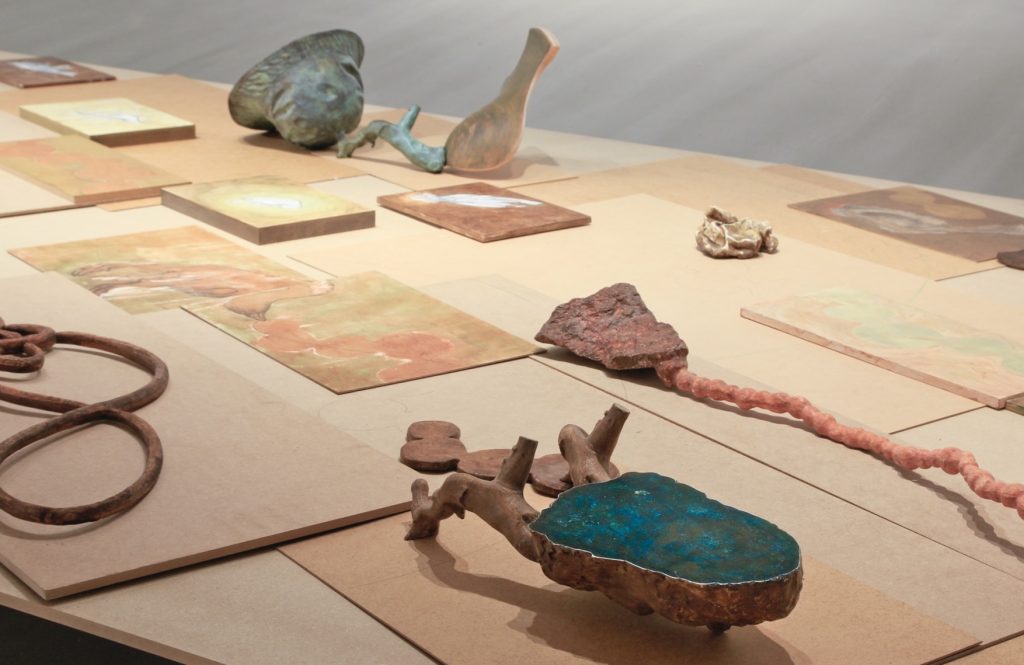
Märit: You could say, it amounts to yet another translation – to have someone else hanging your work.
Martine: Exactly! And you, Ellen, you use a material that was intended for something very different. That too involves a kind of transformation.
Ellen: Both of us use materials that we process in ways that turn them into something else. I use only one material, nylon rope, sometimes twisted, but right now of the heavy duty, braided kind. The structures within the material give me ideas of how to use the actual twisting and braiding, but also how to unravel and transform it so as to modify its appearance.
Märit: What is it about this material that makes it so appealing?
Ellen: I’ve been working with nylon ever since I was a student at Oslo National College of Art and Design. It has a number of properties that I like. Colour is very important to me. Since the rope is completely white, any colour can be rendered vivid. That wouldn’t be possible with a natural material. I work both with and against the material. I use its industrially determined structure, but also unwind it. The material shrinks a lot when it’s dyed, which helps the spirals retain their shape. And I like the fact that it’s on the boundary between being repellent and beautiful.
Märit: To me there’s something highly symbolic about your objects. They suggest many associations to nautical life and the like, but at the same time they are very concrete, as your title Kveil demonstrates. It is what you say it is, so to speak.
Ellen: I tend to talk a lot about techniques and materials, but really it’s all a matter of natural phenomena. Like life on the ocean floor, where you find living organisms with swaying luminescent tentacles. In my installations, I enlarge things that are very small while trying at the same time to recreate the vibrant colour contrasts of the microcosm.
Although the dyes I use are synthetic, I’m convinced these colours can be found in nature. Many people seem to think the only natural colour is brown. But you only need to watch a nature documentary to realise that nature is utterly psychedelic!

Martine: I work with many materials, mostly wood. For me, landscapes, trees, and paths are particularly meaningful, and I spend a lot of time outdoors. This is reflected in the materials I use. One thing that has always fascinated me is human physique and our ability to keep our balance, even on uneven ground. It’s remarkable to think of everything that has to come together for a person to stay standing upright. There’s also the apparent contradiction in the fact that people are so fragile, yet at the same time so strong and robust. We’re pretty resilient. Speaking of balance, one of my works in the exhibition has the title Balansestykke (Balancing Act), an object shaped a bit like a backbone. I often work with wood. But I got to a point where I found the wood too seductive, so I’ve started using paint. The tension or idiom I was looking for tended to disappear behind the wood. It was too beautiful.
Märit: That’s something both of you have mentioned. Can a work really be too beautiful?
Martine: Once in a while I feel I end up almost suffocating a work. Of smothering all the potential it once held during the process of developing it, with the result that it ends up being too beautiful. Most materials have a will of their own, and allowing a process to take its own course rather than overriding it is an important aspect of the work.
Ellen Grieg Kveil (Coil) and Martine Linge Bevegelser i ulendt terreng (Movements on Rough Terrain)
21 January–13 February 2022
Trøndelag Centre for Contemporary Art
